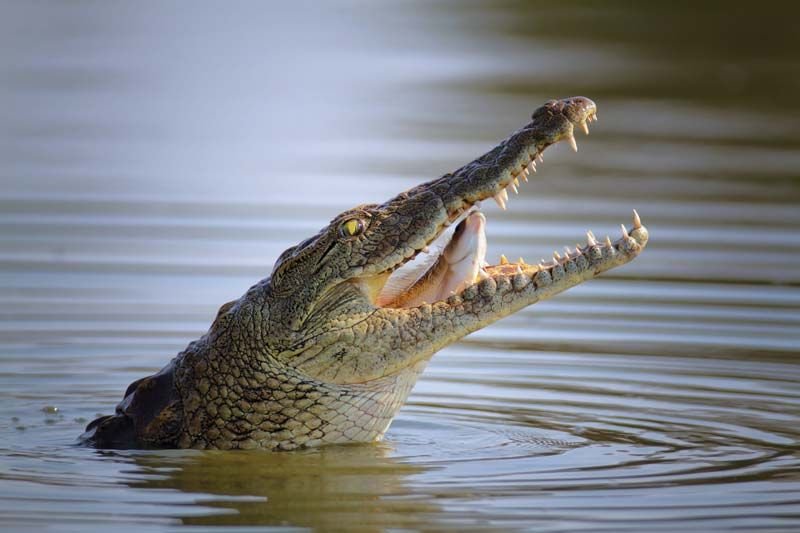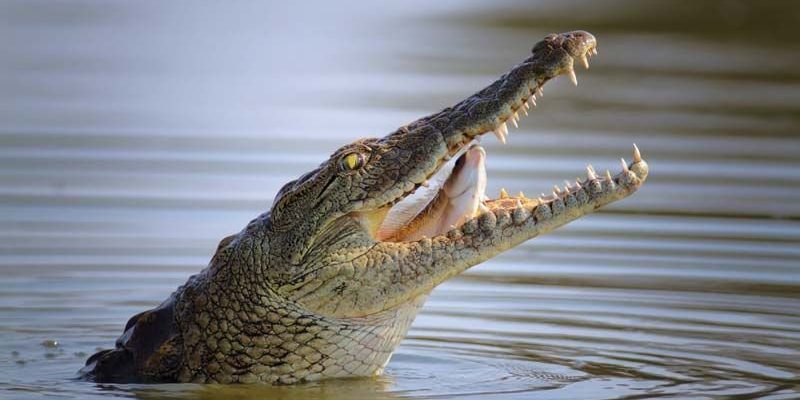
You might be surprised to learn that crocodiles have inhabited the planet for over 200 million years! Their ability to thrive in diverse habitats—from swamps and rivers to brackish coastal areas—shows just how versatile these creatures are. So, what’s their secret? Let’s dive into the world of crocodiles and discover how they manage to live and thrive in such challenging environments.
1. Adaptations to Extreme Temperatures
Crocodiles are cold-blooded, which means they rely on external temperatures to regulate their body heat. This gives them an edge in harsh environments, whether they’re basking in the sun or seeking shade. When it’s really hot, crocodiles can be found sunbathing on rocks, absorbing warmth. But they also have a clever trick up their sleeves: they can open their mouths wide to cool down, letting heat escape like a natural air-conditioning system.
On the flip side, during chilly nights or cooler seasons, crocs can slow their heart rate and enter a state of near hibernation. This makes their metabolism drop significantly, allowing them to conserve energy until temperatures rise again. So, while you might need a sweater when it gets cold, crocodiles can simply hit the pause button on their activity!
2. Water and Salinity Management
Living in varying water conditions is another way crocodiles show their adaptability. They often dwell in fresh, brackish, and even saltwater habitats. But here’s the kicker: crocodiles have specialized glands in their tongues that help them excrete excess salt. This allows them to drink seawater or live in saltier environments without getting dehydrated. It’s kind of like having a built-in water filtration system!
In addition to salt management, crocodiles are efficient swimmers. Their powerful tails and streamlined bodies help them navigate through water effortlessly. When the going gets tough, you may find them lurking just below the surface, waiting patiently for days. Their incredible ability to hold their breath for up to two hours makes them expert ambush predators, allowing them to thrive in watery ecosystems.
3. Hunting Strategies in Diverse Environments
Crocodiles are masterful hunters, employing various strategies to catch prey depending on their environment. In freshwater areas like rivers and lakes, they often rely on stealth and patience. Picture this: a croc lying motionless, almost camouflaged, until its prey comes too close. With lightning speed, they lunge out of the water to catch fish, birds, or even small mammals. It’s all about striking when the moment is just right!
In brackish or coastal waters, crocodiles can use their size and strength to overpower larger animals. They can even hunt in the shallows or on land if necessary. Have you ever seen a documentary showing a crocodile dragging its prey into the water? That’s not just brute force; it’s a survival tactic used to make sure the prey can’t escape. Their flexibility in hunting styles is a testament to their adaptability.
4. Camouflage and Social Behavior
Crocodiles have some impressive tricks for staying out of sight. Their rough, scaly skin blends perfectly with the muddy banks or sun-drenched rocks, helping them remain hidden from both prey and potential threats. It’s like wearing the ultimate camouflage suit!
But crocodiles aren’t just solitary creatures; they also have social structures. During mating season, they’ll engage in various vocalizations and body language, demonstrating their ability to communicate. These interactions help establish dominance and find mates, showing that even in harsh environments, social bonds play a role in their survival.
5. Resilience to Injury
Crocodiles are surprisingly resilient creatures. They can survive injuries that would be fatal to many other animals. For instance, if a crocodile loses a limb, it can adapt over time, learning to compensate for the loss while continuing to hunt and thrive. This ability to bounce back from adversity is a crucial part of their survival toolkit.
Additionally, crocodiles have a remarkable healing capacity. Their skin is packed with bacteria-fighting substances, making it less likely for wounds to become infected. So, if you’re ever worried about a scraped knee, remember: crocodiles have a way of healing that puts many of us to shame!
6. Feeding Habits That Support Survival
Crocodiles are opportunistic feeders, which means they’ll eat whatever’s available. Their diet includes fish, birds, mammals, and even carrion. This flexibility allows them to thrive in various ecosystems, adapting their diet based on what’s most plentiful.
When food is scarce, they can go for weeks—sometimes even months—without eating. This ability to fast is crucial when food becomes difficult to find, especially in harsh environments. Instead of panicking, they simply wait it out, conserving energy for when the next meal becomes available.
7. Environmental Threats and Conservation Efforts
Despite their impressive adaptations, crocodiles face numerous threats today, including habitat destruction, pollution, and hunting. Human activities have pushed many crocodile populations to the brink, making conservation efforts more important than ever.
Organizations around the world are working hard to protect these ancient reptiles and their habitats. They focus on creating protected areas and raising awareness about the vital role crocodiles play in ecosystems. By safeguarding their environments, we not only ensure the survival of crocodiles but also help maintain the balance of nature.
8. Conclusion: The Remarkable Survivor
Crocodiles are not just survivors; they’re masters of resilience in some of the harshest environments on our planet. From their temperature-regulating behaviors to their impressive hunting strategies, these reptiles have evolved over millions of years to adapt to their surroundings effectively.
The next time you hear about crocodiles, remember that they are a symbol of strength and adaptability. They remind us that survival often depends not just on strength, but also on the ability to adjust and thrive in changing conditions. Crocodiles truly embody the spirit of overcoming challenges in a tough world!

